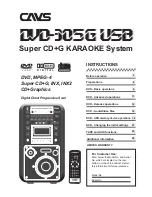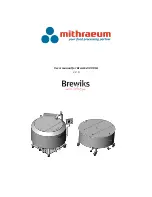
5
Monitoring unit operation
If the flame burns irregularly or goes out, the unit is
switched off by the automatic burner relay. The unit
may only be restarted after the automatic burner relay
has been manually released.
The integrated temperature monitor (TW) regulates the
temperature of the units and the air being blown out
during heating operation.
The safety temperature limiter (STB) interrupts opera-
tion of the unit or burner when extreme overheating oc-
curs or if the TW ceases functioning. The STB can only
be manually released after the unit has cooled.
If heating mode is controlled via a room thermostat or
other temperature regulating device (operating switch
set to “Heizen” (heating), the units function fully-
automatically based on amount of heat required.
All of the unit functions are performed automatically and
monitored by the integrated temperature control mecha-
nism and the automatic burner relay (part of the forced-
air burner).
After the device is switched off with the operating switch
or the room thermostat, the air supply fan runs for a cer-
tain amount of time to cool the combustion chamber
with heat-exchanger and then switches off. This proc-
ess can be repeated several times.
Before releasing the safety temperature limiter
(STB), the possible causes of the malfunction must
be investigated.
Never interrupt (except in emergency situations)
the power supply until the cool-down phase is
completely finished. Our guarantee does not cover
damages caused to the unit by overheating.
Information on the Safety Temperature Limiter (STB)
The device is equipped with a sensor monitoring feature
and is resistant to cool down to temperatures of -20°C;
below -20°C the device switches off; when the tempera-
ture rises above this temperature, it switches on again.
When the sensor or capillary tube is damaged, or when
an excess temperature of approximately 220°C is
reached, the liquid contained in the thermostat is emp-
tied and the device switches off for safety purposes.
The device is no longer operable and must be replaced
If it is necessary to replace the STB, only the original
REMKO part may be used.
Do not bend the capillary tubes near to solder points.
When installing the capillary tubes, be careful not to
damage or bend them too sharply.
The sensors may only be mounted in the mounting
brackets supplied by the manufacturer.
The sensors must always be free from dust and dirt.
Prior to Setup
When setting up the units, the relevant regional building
and fire protection codes of the respective region must
be observed.
Selecting the Setup Location
When selecting a location to set up the units, the re-
quirements must be adjusted with respect to:
1. Fire protection and operating hazards.
2. Function.
When the units are used to heat rooms, when it is
necessary to adjust to the amount of pressure in the
room, etc.
3. Operating needs.
Heating requirements, rated air output, need for cir-
culation or outside air, humidity, room temperature,
air distribution, space needs, etc.
4. How the unit is connected to the exhaust system.
Oil fired warm air generators (including those with a
rated heat capacity of more than 50 kW) may generally
be set up outside of heating rooms in compliance with
the German fire ordinance.
For rooms where slightly flammable materials or mix-
tures are processed, stored or produced that could be
dangerous if ignited, exceptions may be made if appro-
priate measures are taken to ensure that the materials
or mixtures cannot catch fire.
The unit must be set up and assembled in such a
way that it is easily accessible for monitoring, re-
pair and maintenance work.
Important Information about Safe Setup
The units may only be set up and operated in rooms
where there is enough air for combustion and the
expelled air is guided to the outside via an exhaust
system.
Units dependent on air in the room may only be set
up in rooms or buildings from which air is suctioned
out by means of fans (such as ventilation or exhaust
systems) if:
1. Safety mechanisms prevent the units and the air
suctioning system(s) from operating simultane-
ously.
2. The expulsion of exhaust is monitored by special
safety devices.
3. The exhaust produced by the units is expelled by
means of the air suctioning system(s).
4. The design or dimensions of the system ensure
that no dangerous negative pressure can be pro-
duced.
The units must be placed firmly on a suitable, non-
flammable surface outside of traffic zones, for exam-
ple, away from cranes.






































